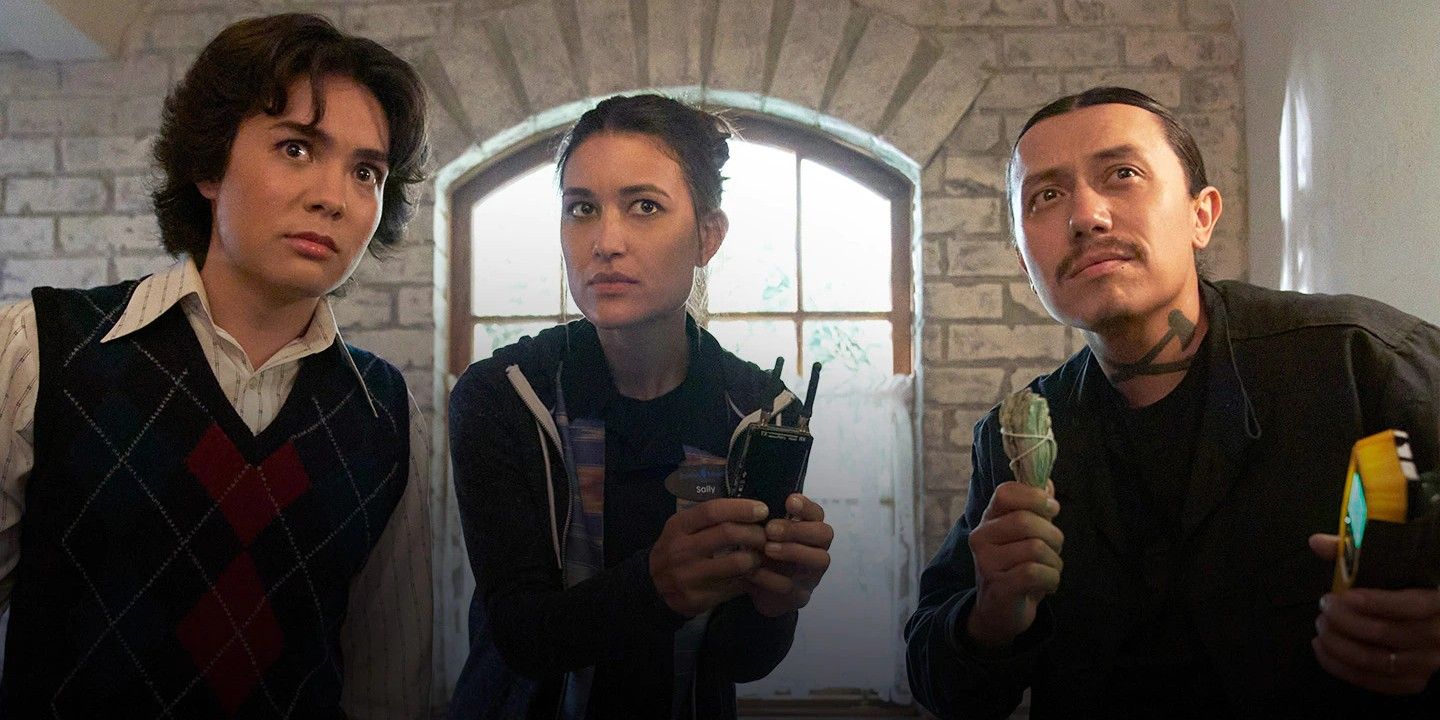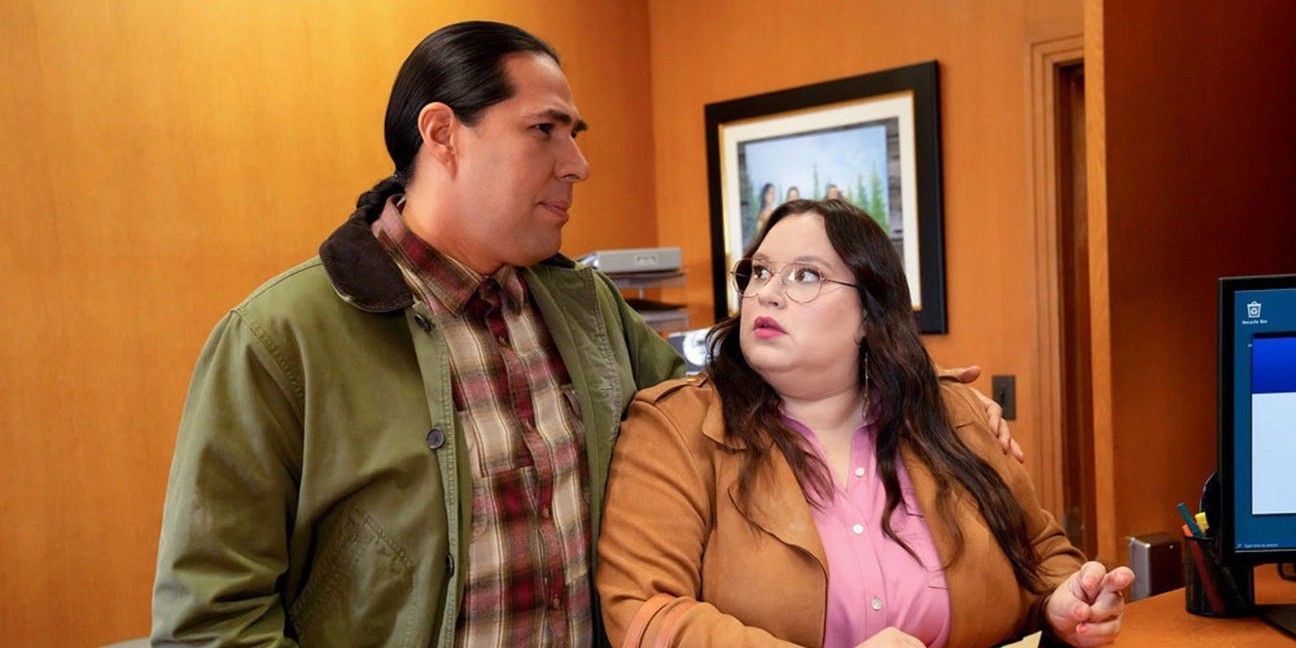The following contains spoilers for Rutherford Falls Season 2, Episode 1, “White Man in the Cupboard,” which premiered June 16 on Peacock.
The horror genre often relies on tropes not necessarily due to lackluster storytelling but as narrative shortcuts. Creepy music and jump scares help set the ambiance and deliver the frights the genre is known for, even if viewers expect them. Some tropes are less innocuous, however, and have perpetuated stereotypes and done some real harm. While horror’s final girl penchant is now a source of joy, some think it’s rooted in the industry’s misogyny, while the genre has often failed at depicting mental illness with any sort of nuance or compassion. The Indian burial ground trope is similarly problematic, though the Peacock comedy Rutherford Falls has found a way to flip it on its head.
The original trope finds characters — usually white suburban folks — blaming supernatural activity on a previous Indian burial ground. These characters will say that they’ve disturbed the peace of their Indigenous predecessors, whose spirits are angry and out for vengeance. This trope really became a part of cinema history with The Amityville Horror, which claimed that the house that held so many atrocities had originally been built on a Shinnecock burial ground. The trope has since found its way into several other movies and TV shows, including series as popular as Supernatural and Parks and Recreation. The problem is, the trope reproduces problematic ideas about fearing Indigenous peoples and ignores the record of the violent treatment of these groups and their practices.
While the trope is mostly dead now, Rutherford Falls finds a way to flip it as a commentary on previous white treatment of Native peoples. The series has been a showcase of Indigenous talent, both in front of the camera as well as in the crew, the music, the set design and beyond. It’s no surprise that any reference to this tired trope would provide a different viewpoint.
In the first episode of Season 2, Bobbie is convinced that the Minishonka Cultural Center has a ghost. They enlist the help of Sally and Wayne, both members of the Minishonka Nation, to help them drive it out. The pair claim that it’s probably a bunch of “white ghosts pissed off because Indians have reclaimed the space.” Here the Indians aren’t the source of the supernatural, and they’re not dead and relegated only to the past. Instead, they’re the ones who are alive and in charge. Coupled with a few gags about using a Cheers DVD, nine-dollar chardonnay, a Malcolm Gladwell book and grilled unseasoned chicken to summon the ghost, Rutherford Falls makes it clear just how ridiculous previous uses of the trope really were.
Of course, the ghost in Rutherford Falls isn’t real, and the unseasoned chicken only worked to summon the actual living person in the cultural center’s attic. The way that the episode showcased a reversal of the retired Indian burial ground trope, however, shows a real engagement with cinema history, a desire to right the genre’s past wrongs, and a commitment to being downright funny.
Catch Season 2 of Rutherford Falls, streaming now on Peacock.


